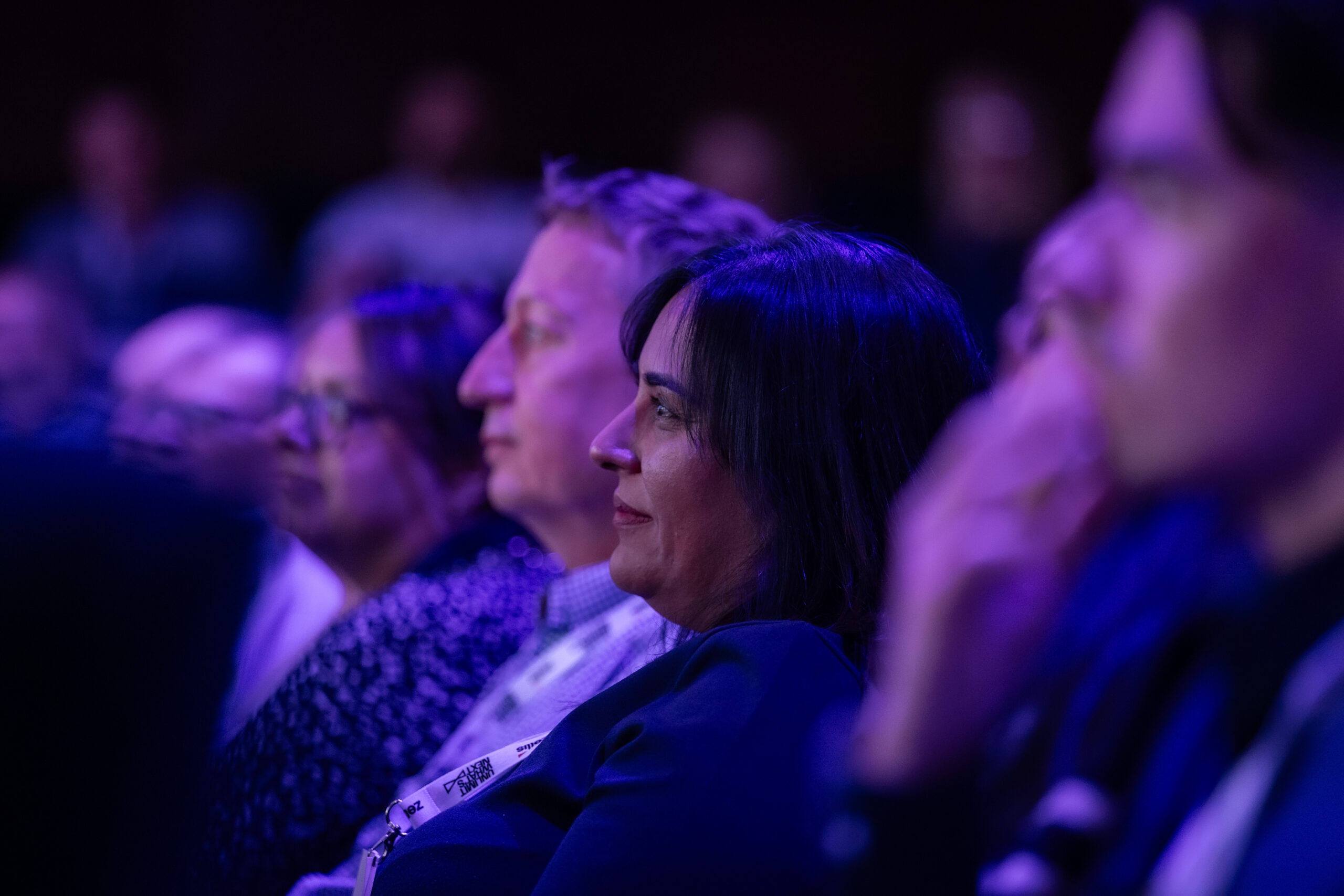The year 2025 has marked significant turning point for the UK restaurant industry. Rising labour costs (brought about by the 2024 Autumn Budget) high employee turnover, and a tough recruitment market are putting mounting pressure on HR professionals in the sector.
In this article, we outline 7 practices to help restaurant leaders not just manage, but excel in today’s evolving landscape. From purposeful hiring and onboarding to clear communication, and flexible scheduling, each strategy supports a more resilient, people-first culture.
1. Purposeful hiring and onboarding
Just as crafting a bespoke menu is thoughtful and deliberate, so should be the process of hiring and onboarding new employees.
This is particularly crucial in the restaurant industry, where retaining employees is a real challenge. According to the CIPD, the food services sector has the highest annual turnover rate at 52.2%. Rising National Insurance Contributions only add to the pressure – driving up labour costs and making it harder for businesses to attract employees with competitive pay and benefits.
So, how can restaurants reduce turnover in today’s tough economic climate? By focusing on purposeful hiring and employee wellbeing.
Purposeful hiring is about selecting candidates who align with your company’s values and culture. Research from Gallup suggests that when employees feel connected to the company culture, they are 4 times as likely to be engaged at work. And with the cost of replacing an employee on average being 1.5 to 2x an employee’s salary, investing time and effort into finding the right hires is essential for long-term profitability.
It’s important to consider:
- What are your company values?
- What attributes do you look for in your employees?
- How can you assess these during the hiring process?
But it doesn’t stop there. The onboarding experience is equally as important as hiring. It’s the first touchpoint new hires have with your restaurant. An opportunity to generate excitement about their role, introduce them to the team, and provide comprehensive training opportunities. It’s also a chance to highlight what your company stands for and to build a culture that values both professional growth and personal wellbeing.
So, HR professionals, it’s time to rethink your approach to hiring and onboarding. Don’t just focus on filling seats – invest in powering exceptional employee experiences.
2. Embracing AI
According to a survey conducted by the HR Ninjas community, 88% of respondents working in the restaurants and food services industry currently embrace AI in HR. It’s clear that AI’s impact is being felt across all levels of the business – from the frontline to the back office.
From an employee perspective, AI offers real-time responses to queries – whether it’s checking shift schedules, booking time off, or accessing company policies. AI tools like ELLA offer employees assistance at their fingertips. The result? A faster, smarter, and more convenient employee experience.
For managers and HR admins, the benefits of AI are just as impactful. AI can help identify trends based on company information – such as turnover rates, absenteeism, or training needs – facilitating faster, data-driven decision making.
If you’re looking for a quick snapshot of your restaurant’s daily operations, for example, ELLA can show you who’s on shift and where there might be coverage gaps, so you know exactly what to expect when you start the day. And, if you want to know who’s available to cover a shift at the last minute, ELLA can instantly check the system, find people who aren’t already maxed out on hours, and provide a list of names – saving you time and keeping service smooth.
3. Frequent and transparent communication
How do you foster open communication with your employees? By this, we don’t mean just sharing the daily specials or shift schedules. But, creating a genuine, two-way dialogue that’s transparent.
Do your waiters, chefs, and hosts know when the benefits enrollment period is? Are they aware of upcoming changes to company policies or procedures?
Communication is critical in any industry, but it’s even more critical in the fast-paced and demanding world of restaurants. Research suggests that poor communication can result in:
- Wasted time during service
- Missed messages between front and back of house
- Burnout, stress, and fatigue
- Bad customer experience
- Lost customers to competitors
- Lost employees
When management fosters open dialogue around the business’s goals, challenges, and successes, it creates an atmosphere of mutual respect, trust and transparency. In turn, employees feel more empowered to take ownership of their roles and contribute to a shared sense of purpose.
An internal communications platform is an excellent way to keep everyone in the loop.
This includes frequent communication about new menu rollouts, shift schedules and requests, shout-outs for top-performing waiters, details on upcoming training sessions, and invitations to team-building events.
4. Growth opportunities
Limited career growth opportunities is one of the main reasons that restaurant employees leave their jobs. They often see this industry as a stepping stone rather than a long-term career option. But, that can change with a strategic approach to employee development.
Consider what training and development opportunities you could offer your employees. Could you introduce shadowing or department rotations across different areas of the restaurant, such as hosting, waiting tables, or helping with preparation work in the kitchen? Or, perhaps you could run a mentorship program that helps employees learn from more experienced team members?
Beyond helping employees grow, this kind of training also strengthens your business’ ability to adapt. For example, if a waiter calls in sick during peak hours, a cross-trained host or bartender could temporarily step in to assist with seating and taking orders, ensuring service remains smooth and customers are happy.
Zellis’ learning and development tools support comprehensive cross-training programmes, whilst also allowing you to create tailored development plans.
By helping your team members grow their skills and confidence, you can support job satisfaction and prevent high turnover in the long run.
5. Flexible scheduling
Giving your employees more control over their schedules can make a big difference in their overall job satisfaction – and your business’ performance.
With mobile-first scheduling tools, employees can:
- View rotas
- Request shift swaps
- And receive real-time updates, all at the click of a button.
In the fast-paced, high-turnover restaurant industry, this flexibility isn’t just nice to have – it’s a competitive advantage that helps attract and retain top talent, keeping operations running efficiently.
6. Employee wellbeing
Did you know that there is a direct correlation between employee wellbeing and customer satisfaction?
Employee wellbeing is a multifaceted concept that goes beyond just physical health. It also includes mental, social, and financial wellbeing. In the restaurant industry, where hours tend to be long and stress levels are often high, the prioritisation of employee wellbeing cannot be understated.
It doesn’t mean you must spend a lot, as we appreciate that most restaurants operate on a tight budget. Often, it’s the everyday gestures that make the biggest difference – like showing genuine appreciation, recognising hard work after a tough shift, or creating rotas that respect personal commitments. Even small things, such as offering a free meal during double shifts or scheduling breaks before the dinner rush, show that you care.
Financial wellbeing is just as important to consider. When employees are worried about bills or pay cycles, stress levels rise and focus drops. With financial wellbeing tools, such as ZellisONE Pay, you can:
- Reduce financial stress for employees with early access to earned wages
- Build financial confidence with personalised education and guidance
- Support smarter budgeting, saving, and planning
Ultimately, by investing in your employees’ overall wellbeing, you improve their quality of life and create a happier and more engaged workforce. This ultimately leads to a better customer experience.
7. Diversity and inclusion
When we talk about employee wellbeing, we also mean creating an inclusive and diverse workplace. An environment where employees feel respected and included regardless of their background, ethnicity, gender, or sexual orientation.
Diversity and inclusion should be embedded in every aspect of your organisation, from hiring practices to company culture. It is the secret ingredient that strengthens teams and fosters unity.
Research into the state of HR in 2025 reveals that 59% of UK HR professionals consider DEI a top priority. Most notably, 75% of restaurants are advancing DEI initiatives, highlighting their commitment to building diverse teams. But what does this commitment look like in reality?
It involves inclusive hiring practices, diversity training, creating employee resource groups, and fostering open dialogue across your team.
By embracing these practices, restaurants don’t just attract a diverse pool of talent, they also create an atmosphere of inclusion that helps boost employee satisfaction, retention, and customer happiness.
ZellisONE is built with restaurants in mind
Designed with the unique needs of hourly workers in mind, ZellisONE emerges as a valuable partner for restaurants navigating the complexities of 2025. Offering a comprehensive suite of HR, Pay, Workforce Management, Talent, and Benefits tools, ZellisONE empowers restaurants to streamline their HR processes and focus on what truly matters – creating exceptional experiences for employees and customers.
The state of HR in the restaurant industry is rapidly changing, and it’s time for restaurants to adapt. By prioritising employee wellbeing, embracing diversity and inclusion, and investing in tools like ZellisONE, you can set yourself up for success in 2025 and beyond.
Key takeaways
- The UK restaurant industry faces mounting HR pressures including high turnover, rising labour costs, and recruitment challenges
- AI is transforming restaurant HR by streamlining operations, enabling data-driven decision making, and enhancing employee experiences
- Purposeful hiring and thoughtful onboarding focused on company culture, wellbeing, and recognition can significantly reduce turnover and boost engagement
- Frequent, transparent communication and growth opportunities help foster trust and long-term career development
- Flexible scheduling improves job satisfaction and retention by addressing work-life balance
Unlimit what’s next for your restaurant
Discover how ZellisONE tackles HR challenges, equipping you with the tools to create, deliver, and measure first-class people processes.








